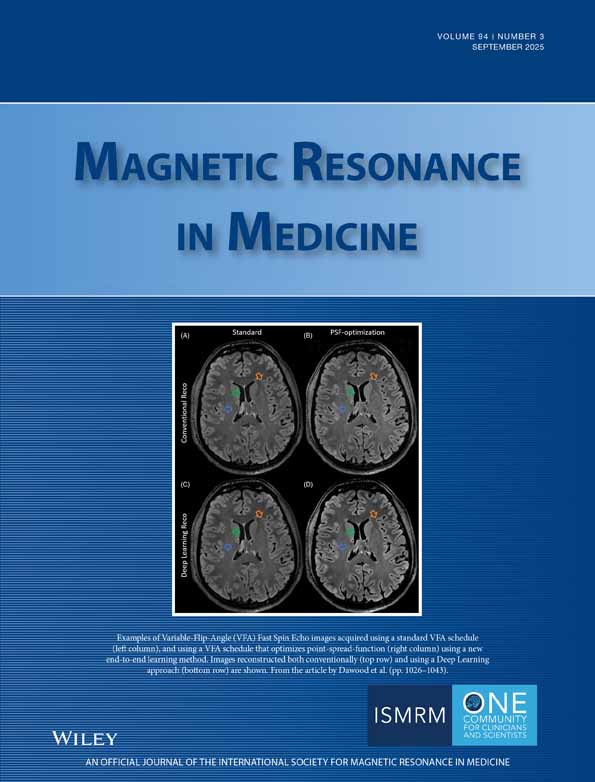Method for reduced SAR T1ρ-weighted MRI
Abstract
A reduced specific absorption rate (SAR) version of the T1ρ-weighted MR pulse sequence was designed and implemented. The reduced SAR method employs a partial k-space acquisition approach in which a full power spin-lock pulse is applied to only the central phase-encode lines of k-space, while the remainder of k-space receives a low-power spin-lock pulse. Acquisition of high- and low-power phase-encode lines are interspersed chronologically to minimize average power deposition. In this way, the majority of signal energy in the central portion of k-space receives full T1ρ-weighting, while the average SAR of the overall acquisition can be reduced, thereby lowering the minimum safely allowable TR. The pulse sequence was used to create T1ρ maps of a phantom, an in vivo mouse brain, and the brain of a human volunteer. In the images of the human brain, SAR was reduced by 40% while the measurements of T1ρ differed by only 2%. The reduced SAR sequence enables T1ρ-weighted MRI in a clinical setting, even at high field strengths. Magn Reson Med 51:1096–1102, 2004. © 2004 Wiley-Liss, Inc.




